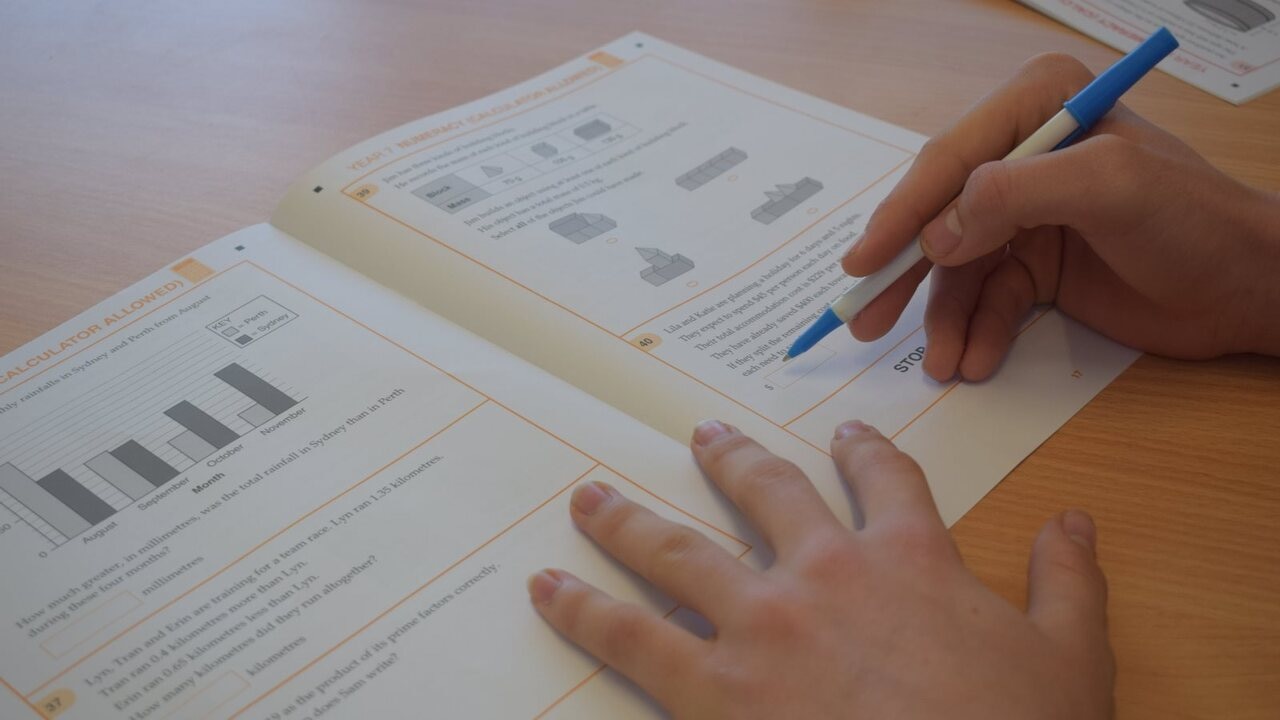Naplan results reveal shocking drop in Territory students’ literacy and numeracy skills
Recent Naplan results reveal appalling deficits, with the majority of Territory students not meeting national literacy and numeracy proficiency standards. Read the details.

Northern Territory students have gone backwards in nearly every Naplan indicator, leaving little to celebrate in the 2025 results.
The national Naplan results were released on Wednesday, revealing appalling deficits in Territory students literacy and numeracy skills.
Students in Years 3, 5, 7 and 9 sit Naplan each year, assessing their reading, writing, spelling, grammar and numeracy ability.
Grammar was Territory students’ worst skill, with nearly two-thirds of students across all year levels failing to meet national expectations.
Numeracy, reading, writing and spelling were also lacking, with more than half of all Territory students not meeting proficiency standards.
The only real minor gain was Year 9 reading which grew from an average of 494 in 2024 to 499 in 2025.
The NT Department of Education also celebrated an increase in participation rates and cohort gains.
The cohort rises were proportional to other education systems, showing Territory students are improving every two years, and in some cases more so than their state counterparts.
The Territory has the largest proportion of Indigenous students, with many speaking two or three languages other than English.
This cohort faces significant challenges participating in the national standardised test, as revealed in the data.
In Year 5 numeracy, 71.3 per cent of Indigenous students need additional support compared to 8.3 per cent of non-Indigenous students.

The comparison across all year levels in all five tests paint a similar picture, with about 70 per cent of Indigenous students requiring extra support compared to about 10 per cent of non-Indigenous students.
A teacher at a remote school — who spoke on condition of anonymity — described Naplan tests as “pointless” for remote Indigenous students.
“In teaching circles we call it junk data; because it is so far removed from these students’ needs and ability it becomes meaningless,” he said.
“We know these students are the most disadvantaged in the nation, and all this test does is sap their confidence and make them feel school is not the place for them.”
Since 2023 all students have completed Naplan online, which this teacher said presented another hurdle for his students who already spoke English as an additional language.
“They force us to do it online now which increases the barriers as our students lack digital literacy skills too,” he said.
Nevertheless, across the board the results show Territory students require more support to reach national literacy and numeracy standards.

The Department promised to double down on explicit teaching and ‘back to basics’ literacy and numeracy education in response to the poor performance.
Education Minister Jo Hersey said her government’s plan to boost school attendance and focus on back to basics literacy and numeracy education would see Naplan results improve moving forward.
“Our CLP government’s focus remains on boosting school attendance; to improve NAPLAN results, we need children back in the classroom,” Ms Hersey said.
“Only through more participation and increased school attendance do we expect to see an improvement in NAPLAN results.”
What is explicit teaching?
Explicit teaching is a teaching and learning model where teachers give students clear, explicit instructions about what to do and how to do it.
This is a departure from previous student-led approaches such as inquiry based learning which was criticised for lacking structure.
“Previously students were given a provocation to explore, discover and problem solve,” Department of Education teaching and learning services director Kerry Hudson said.
“Then they could go and do some deep learning around it with some explicit teaching at the backend.
“Explicit teaching is flipping back to start with absolute explicit instructions from the teacher who has a really strong understanding about cognitive processing and breaking complex information into smaller parts so the students absolutely understand what is they need to apply.”

The NT Department of Education and Education Minister Jo Hersey launched the explicit teaching model in June through its Boosting Literacy and Numeracy plan.
“The Finocchiaro CLP Government has taken a back to basics approach to ensure every student builds strong reading and maths skills,” Ms Hersey said at the launch.
“Our plan aligns to the evidence that shows that students who learn through explicit teaching make greater learning gains than students who do not.

“Every child deserves a quality education, regardless of where they are in the Territory, and we are committed to working with and supporting schools to have a consistent teaching approach.”
The pivot to explicit teaching is set to be implemented across all government schools by 2026.

Gray Primary School has been using the explicit teaching model since 2019.
Principal Donna Westaway said this approach to teaching suited her students better.
“We have a high proportion of students who speak English as an additional language or dialogue,” she said.
“Explicit instruction is what our students need.
“All our data has shown a definite improvement in student outcomes because of this approach.”
More Coverage
Originally published as Naplan results reveal shocking drop in Territory students’ literacy and numeracy skills





